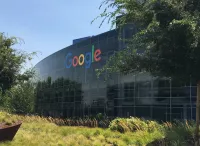Google Maps is a widely used web mapping platform providing satellite imagery, street maps, real-time traffic, and route planning for various modes of transportation. It offers 360° panoramic street views and boasts a user base exceeding one billion monthly users globally as of 2020. Its features are accessible through a web interface and mobile applications.
2003: Where 2 Technologies Founded
In early 2003, Where 2 Technologies, the Sydney-based company that initially developed Google Maps, was founded by Lars and Jens Eilstrup Rasmussen, Noel Gordon, and Stephen Ma.
September 2004: Google Acquires ZipDash
In September 2004, Google acquired ZipDash, a company that provided real-time traffic analysis.
October 2004: Google acquires Where 2 Technologies
In October 2004, Google Inc. acquired Where 2 Technologies, where the initial program transformed into the web application Google Maps. The Rasmussen brothers, Gordon and Ma joined Google at that time.
February 8, 2005: Google Maps Launch Announcement
On February 8, 2005, the launch of Google Maps was first announced on the Google Blog.
February 2005: Google Maps Launched
In February 2005, after the acquisition of a geospatial data visualization company and a real-time traffic analyzer, Google Maps was officially launched as a web application.
June 2005: Google Maps API launched
In June 2005, Google launched the Google Maps API to allow developers to integrate Google Maps into their websites.
September 2005: Hurricane Katrina Imagery Update
In September 2005, in the aftermath of Hurricane Katrina, Google Maps quickly updated its satellite imagery of New Orleans to allow users to view the extent of the flooding.
November 2005: Google Local for Mobile launched in beta
In November 2005, Google Maps (then known as Google Local for Mobile) was launched in beta for mobile platforms supporting J2ME.
2005: ANSTO concern about potential terrorist use
In 2005, the Australian Nuclear Science and Technology Organisation (ANSTO) expressed concern about potential terrorist use of satellite images in Google Maps for planning attacks, specifically referencing the Lucas Heights nuclear reactor.
2006: Google Maps for Mobile released
In 2006, Google Local for Mobile was officially released as Google Maps for Mobile.
February 2007: Google Maps released for Windows Mobile
In February 2007, a version of Google Maps was released specifically for Windows Mobile.
April 2007: My Maps launched
In April 2007, My Maps, a feature in Google Maps, was launched, enabling users to create custom maps for personal use or sharing.
May 25, 2007: Google Street View released
On May 25, 2007, Google released Google Street View, a feature of Google Maps providing 360° panoramic street-level views of various locations. Initially, it included only five cities in the U.S.
November 2007: Google Maps released for Symbian
In November 2007, the Symbian app version of Google Maps was released.
November 28, 2007: Google Maps for Mobile 2.0 Released
On November 28, 2007, Google Maps for Mobile 2.0 was released featuring a beta version of a "My Location" feature. This used GPS/Assisted GPS and wireless network and cell site data to determine the user's location.
2007: Miniature View and Info Windows Equipped
As of 2007, Google Maps was equipped with a miniature view with a draggable rectangle denoting the area shown in the main viewport, and "Info windows" for previewing details about locations on maps.
2007: Traffic data overlay
In 2007, Google Maps started offering traffic data as a colored overlay on roads and motorways to represent vehicle speeds. This feature uses crowdsourcing to obtain GPS locations from cellphone users, enabling the creation of live traffic maps.
2007: Google Maps Mobile 2.0 announced
In 2007, version 2.0 of Google Maps Mobile was announced, featuring the 'My Location' feature to find the user's location using cell towers, without GPS.
March 2008: Feature to edit locations added
In March 2008, Google added a feature to edit the locations of houses and businesses due to street data inaccuracies in Google Maps.
September 2008: Google Maps released for Android
In September 2008, Google Maps was released for and preloaded on Google's Android platform.
September 23, 2008: Google Maps App for Android Released
On September 23, 2008, coinciding with the announcement of the first commercial Android device, Google announced that a Google Maps app had been released for its Android operating system.
2008: GCHQ system supported by Google Maps use
In 2008, a leaked document stated that "[i]t effectively means that anyone using Google Maps on a smartphone is working in support of a GCHQ system."
2008: Senghor on the Rocks publishes
In 2008, the German "geo-novel" Senghor on the Rocks presents its story as a series of spreads showing a Google Maps location on the left and the story's text on the right.
July 2009: Mapping college campuses
In July 2009, Google began mapping college campuses and surrounding paths and trails to expand Google Maps' coverage.
October 2009: Turn-by-turn navigation announced as beta for Android
In October 2009, Google announced turn-by-turn navigation as a separate beta testing app exclusive to Android 2.0 devices.
October 2009: Replaced Tele Atlas
In October 2009, Google replaced Tele Atlas as their primary supplier of geospatial data in the US version of Maps and used their own data.
December 2009: Introduction of 45° angle aerial imagery
In December 2009, Google introduced a new view consisting of 45° angle aerial imagery, offering a "bird's-eye view" of cities. The first cities available were San Jose and San Diego.
February 2010: 45° imagery as experimental feature
In February 2010, the 45° angle aerial imagery was introduced as an experimental feature in Google Maps Labs.
July 2010: 45° imagery in Google Maps
In July 2010, the 45° angle aerial imagery was made available in Google Maps in select cities in South Africa, the United States, Germany and Italy.
October 2010: Nicaraguan troops stationed on Isla Calero
In October 2010, Nicaraguan military commander Edén Pastora justified stationing Nicaraguan troops on the Isla Calero based on the border delineation given by Google Maps, which Google later found to be incorrect and updated.
March 2011: Indoor maps added
In March 2011, indoor maps were added to Google Maps, allowing users to navigate within buildings such as airports, museums, shopping malls, and transit stations.
April 19, 2011: Map Maker Added to US Google Maps
On April 19, 2011, Map Maker was added to the American version of Google Maps, enabling users to edit and add changes. This allowed Google to receive local map updates in almost real-time.
September 2011: Deprecation of Google Maps API for Flash
In September 2011, Google announced it would deprecate the Google Maps API for Flash.
October 2011: MapsGL announced
In October 2011, Google announced MapsGL, a WebGL version of Maps with better renderings and smoother transitions.
2011: Satellite Imagery Update
In 2011, a report indicated that much of the available satellite imagery on Google Maps was no more than three years old and was being updated regularly.
January 31, 2012: Google Fined in France (Later Overturned)
On January 31, 2012, Google was found guilty in France of abusing its dominant position with Google Maps, leading to a fine and damages to Bottin Cartographer. This ruling was later overturned on appeal.
June 2012: Mapping UK Rivers and Canals
In June 2012, Google began mapping the UK's rivers and canals in partnership with the Canal and River Trust. They planned to update the program during the year to include locks, bridges and towpaths.
June 2012: Offline access added for Android
In June 2012, an update for Android devices added support for offline access to downloaded maps of certain regions.
January 29, 2013: Map of North Korea Added
On January 29, 2013, Google Maps was updated to include a map of North Korea.
March 2013: Android app for My Maps released
In March 2013, an Android app for My Maps, initially released under the name Google Maps Engine Lite, became available.
May 3, 2013: Palestine Recognized as a Country
As of May 3, 2013, Google Maps recognized Palestine as a country, instead of redirecting to the Palestinian territories.
July 2013: Tablet support added to iOS version
In July 2013, tablet support was added to the standalone iOS version of Google Maps with version 2.0.
August 9, 2013: Google Latitude discontinued
On August 9, 2013, Google discontinued Google Latitude, a service allowing users to share their locations, which was based on Google Maps.
August 2013: Wikipedia Layer Removed
In August 2013, Google Maps removed the Wikipedia Layer, which provided links to Wikipedia content about locations shown in Google Maps using Wikipedia geocodes.
2013: Most Popular Smartphone App
By 2013, Google Maps was found to be the world's most popular smartphone app, used by over 54% of global smartphone owners.
2013: Waze Acquisition
In 2013, Google acquired Waze, which later influenced Google Maps' functionality.
2013: Snow Creek Bridge Collapse
In 2013, the Snow Creek Bridge collapsed, later leading to a lawsuit against Google for directing users over the bridge despite its known state.
January 27, 2014: NSA and GCHQ interception of Google Maps queries revealed
On January 27, 2014, documents leaked by Edward Snowden revealed that the NSA and the GCHQ intercepted Google Maps queries made on smartphones, and used them to locate the users making these queries.
April 2014: Sneaky privacy change affects iOS users
In April 2014, it was reported that a "sneaky new privacy change" would affect most iOS users. An update to the Gmail iOS app now supports sign-in across Google iOS apps, including Maps, Drive, YouTube, and Chrome, allowing Google to track user actions across these apps.
May 2014: Offline access made more robust on Android
In May 2014, offline access functionality was made more robust on Android devices, after being initially released in June 2012.
August 2014: Google Maps location tracking raises privacy concerns
In August 2014, concerns were raised about Google Maps' location tracking as a threat to users' privacy. It was noted that Google likely logs user locations and provides a location history map. Instructions were provided on how to disable location history.
2014: Google Underwater Street View launched
In late 2014, Google launched Google Underwater Street View, which included 2,300 kilometres (1,400 mi) of the Australian Great Barrier Reef in 3D, using special 360-degree cameras taking shots every 3 seconds.
April 29, 2015: Forwarded to new Google Maps
On April 29, 2015, users of the classic Google Maps were forwarded to the new Google Maps with the option to be removed from the interface.
May 2015: Offensive racial epithets pointed to the White House
In May 2015, searches on Google Maps for offensive racial epithets for African Americans pointed the user to the White House. Google apologized for the incident.
July 14, 2015: Chinese Name for Scarborough Shoal Removed
On July 14, 2015, the Chinese name for Scarborough Shoal was removed from Google Maps following a petition from the Philippines on Change.org.
December 2015: Japanese netizens charged with vandalism
In December 2015, 3 Japanese netizens were charged with vandalism after they were found to have added an unrelated law firm's name and indecent names to locations in Google Maps.
2015: Google Maps Announces Offline Functionality
In 2015 Google Maps announced its new offline functionality, but with various limitations like downloaded area cannot exceed 120,000 square kilometers and require a considerable amount of storage space.
June 27, 2016: New Satellite Imagery Rolled Out
On June 27, 2016, Google rolled out new satellite imagery worldwide sourced from Landsat 8, comprising over 700 trillion pixels of new data.
September 2016: Acquisition of Urban Engines
In September 2016, Google Maps acquired mapping analytics startup Urban Engines.
November 2016: Google announces discontinuation of Google Map Maker
In November 2016, Google announced that Google Map Maker would be discontinued as of March 2017.
2016: South Korea Data Access Declined
In 2016, Google declined South Korea's offer for conditional access to the country's geographic database due to restrictions on reducing quality around sensitive locations.
January 2017: Parking Difficulty Feature Added Exclusively to Android
In January 2017, Google added a feature exclusively to Android that will, in some U.S. cities, indicate the level of difficulty in finding available parking spots.
March 2017: Google Map Maker discontinued
In March 2017, Google discontinued Google Map Maker as previously announced in November 2016.
March 22, 2017: Google Latitude features incorporated into Google Maps
On March 22, 2017, Google integrated the features of the discontinued Google Latitude into the Google Maps app.
April 2017: App can remember where users parked
As of April 2017, Google Maps app, on both Android and iOS, can remember where users parked.
August 2017: Functionality to help users find parking lots and garages
In August 2017, Google Maps for Android was updated with new functionality to actively help the user in finding parking lots and garages close to a destination.
2017: Two Billion Users
In 2017, it was reported that the Google Maps app had two billion users on Android, along with other Google services.
January 2018: Google Maps Go released in beta
In January 2018, Google Maps Go, a version of the app designed for lower-end devices, was released in beta.
May 2018: API Structure Changes Announced
In May 2018, Google announced major changes to the API structure starting June 11, 2018, consolidating endpoints and merging plans into a pay-as-you-go model.
June 11, 2018: Google Maps API Structure changes
On June 11, 2018, Google changed its API structure. This consolidation raised prices by 1400% and caused backlash within the developer community.
June 2018: API key requirement announced
In June 2018, Google announced that an API key linked to a Google Cloud account with billing enabled would be required to access the Google Maps API.
June 21, 2018: Increased Maps API prices
As of June 21, 2018, Google increased the prices of the Maps API and required a billing profile.
July 16, 2018: Google Postponed API change date
In June, Google postponed the API change date to July 16, 2018.
August 2018: 3D Globe View Introduced
In August 2018, Google Maps changed its zoomed-out overall view to a 3D globe, replacing the Mercator projection.
August 2018: Google Maps Updated to 3D Globe
In August 2018, the desktop version of Google Maps was updated to display a 3D globe, moving away from the Mercator projection. Users could still switch back to the 2D map in the settings.
September 2018: Google Maps Go surpasses 10 million installations
By September 2018, the Google Maps Go app had over 10 million installations.
January 2019: Speed Trap and Camera Alerts Added
In January 2019, Google Maps added speed trap and speed camera alerts, which were reported by other users.
March 2019: Android version surpasses five billion installations
In March 2019, the Android version of the Google Maps app surpassed five billion installations.
June 2019: Google Maps directs drivers to dirt road
In June 2019, Google Maps directed nearly 100 drivers in Colorado onto a dirt road after a crash on Peña Boulevard. The road had become muddy due to rain, trapping the vehicles. Google acknowledged the issue, stating that unforeseen circumstances like weather can cause such problems.
October 2019: Transit Route Update
In October 2019, an update allowed Google Maps to indicate users' transit routes.
October 17, 2019: Incident Reporting Added
On October 17, 2019, Google Maps was updated to include incident reporting, resembling a functionality found in Waze.
December 2019: Incognito Mode Added
In December 2019, Incognito mode was added to Google Maps, allowing users to enter destinations without saving entries to their Google accounts.
2019: Live View introduced on Android
In 2019, the Android version of Google Maps introduced the new feature called Live View that allows to view directions directly on the road thanks to augmented reality.
February 2020: 15th Anniversary Redesign
In February 2020, Google Maps received a 15th-anniversary redesign, which included a new app icon resembling the original icon from 2005.
February 2020: Faking a Google Maps traffic jam
In February 2020, the artist Simon Weckert used 99 cell phones to fake a Google Maps traffic jam.
September 23, 2020: COVID-19 Layer Update Announced
On September 23, 2020, Google announced a COVID-19 Layer update for Google Maps, offering a seven-day average of total COVID-19-positive cases per 100,000 people.
2020: Google Maps wins Webby Award
In 2020 Google Maps won the Webby Award for Best User Interface in the category Apps, Mobile & Voice.
2020: Google Maps Usage
In 2020, Google Maps was used by over one billion people every month worldwide.
2020: Teenager dies after Google Maps directs them to abandoned highway
In 2020, a teenage motorist froze to death, and his passenger suffered severe frostbite, after Google Maps led them to an abandoned section of the R504 Kolyma Highway. Their Toyota Chaser became disabled, leading to the tragic outcome.
January 2021: COVID-19 Vaccination Sites Feature Announced
In January 2021, Google announced that it would be launching a new feature displaying COVID-19 vaccination sites.
January 2021: Route Planner Updates for Electric Vehicles Announced
In January 2021, Google announced updates to the route planner to accommodate drivers of electric vehicles, considering vehicle type, status, and charging station locations.
March 2021: Feature Added to Allow Users to Draw Missing Roads
In March 2021, Google added a feature in which users can draw missing roads.
April 2021: Earth Timelapse released
In April 2021, Earth Timelapse was released, allowing users to see how the Earth has changed over the last 37 years using 15 million satellite images.
October 2021: Removal of My Maps Android app
In October 2021, the Android app for My Maps (originally Google Maps Engine Lite) was removed from the Play Store.
November 2021: Android app surpasses 10 billion installations
By November 2021, the Android app of Google Maps had surpassed 10 billion installations.
June 2022: Air Quality Layer Added
In June 2022, Google Maps added a layer displaying air quality for certain countries.
June 2022: Support for toll calculation implemented
In June 2022, Google implemented support for toll calculation. Both iOS and Android apps report how much the user has to pay in tolls when a route that includes toll roads is input. The feature is available for roads in the US, India, Japan and Indonesia.
September 2022: Immersive View preview
In September 2022, Google previewed Immersive View with 250 photorealistic aerial 3D images of landmarks.
September 2022: COVID-19 Layer Removed
In September 2022, Google removed the COVID-19 Layer from Google Maps due to lack of usage of the feature.
2022: Initial release of Lens In Maps
In 2022, Lens In Maps was initially released in Los Angeles, San Francisco, New York, London, and Paris. It identifies shops, restaurants, transit stations and other street features with a phone's camera using AI and augmented reality.
February 2023: Full launch of Immersive View
In February 2023, Google fully launched Immersive View, a feature involving composite 3D images generated from Street View and aerial images of locations using AI.
August 2023: Woman stranded in desert
In August 2023, a woman driving to the Harts Range Racecourse was stranded in the Central Australian desert for a night after following directions provided by Google Maps that directed her to the actual Harts Range instead of the rodeo.
September 2023: Google sued over bridge collapse incident
In September 2023, Google was sued by a North Carolina resident after Google Maps directed her husband over the collapsed Snow Creek Bridge in Hickory the previous year, resulting in his death. The lawsuit claimed Google failed to update the route despite being notified about the bridge's collapse in 2013.
October 2023: Immersive View expansion to routes
In October 2023, Google launched an expansion of Immersive View to routes for 15 cities globally.
October 2023: Lens in Maps expanded to 50 new cities
In October 2023, Lens in Maps was expanded to 50 new cities, marking its biggest expansion yet. Lens in Maps identifies street features with a phone's camera and places relevant information and a category pin on top, like closing/opening times, current busyness, pricing and reviews using AI and augmented reality.
November 2023: Google apologizes for directing users to desert roads
In November 2023, Google apologized after users were directed through desert roads due to closures on Interstate 15. Drivers became stranded on a "bumpy dirt trail" suggested as a detour. Google stated that Google Maps would no longer route drivers through those roads.
November 2023: Hiker rescued after following fake trail on Google Maps
In November 2023, a hiker was rescued by helicopter on Mount Fromme in Vancouver after following a non-existent trail on Google Maps. It was the second such incident in two months. The fake trail has since been removed from the app.
February 2024: Glanceable directions rolling out
In February 2024, Google Maps began rolling out glanceable directions for its Android and iOS apps. This feature allows users to track their journey directly from their device's lock screen.
February 2024: Weather and air quality icon
In February 2024, Google Maps incorporated a small weather icon on the top left corner of the Android and iOS mobile apps, giving access to weather and air quality index details.
February 2024: Tourists stranded due to Google Maps directions
In February 2024, two German tourists were stranded for a week in Queensland after Google Maps directed them to follow a dirt track through Oyala Thumotang National Park, and their vehicle became trapped in mud.
May 2024: Google to discontinue chat feature in Google Business Profile
In May 2024, Google announced it would discontinue the chat feature in Google Business Profile (GBP).
June 2024: Removal of timeline access on web browsers
In June 2024, Google started progressively removing access to the timeline on web browsers, with the information instead being stored on a local device.
July 15, 2024: Disabling new chat conversations
Starting July 15, 2024, new chat conversations would be disabled in Google Business Profile.
July 31, 2024: End of all chat functionalities
By July 31, 2024, all chat functionalities would end in Google Business Profile.
September 2024: Schools altered to incorrect labels
In September 2024, several schools in Taiwan and Hong Kong were altered to incorrect labels, such as "psychiatric hospitals" or "prisons" on Google Maps. Police revealed that local students had carried out the prank.
2024: Miniature View Feature Removed
As of 2024, the miniature view feature had been removed from Google Maps (likely several years prior).
2024: Car falls from under-construction bridge after Google Maps misdirection
In 2024, three men from Uttar Pradesh died after their car fell from an under-construction bridge. They were using Google Maps for driving, which misdirected them, causing the car to fall into the Ramganga river.
February 2025: Gulf of Mexico renamed to "Gulf of America" in Google Maps
In February 2025, in response to Donald Trump's Executive Order 14172, Google Maps renamed the Gulf of Mexico to "Gulf of America" for US users and "Gulf of Mexico (Gulf of America)" elsewhere, excluding Mexico. The decision was criticized, and Google blocked negative reviews following the change.
Mentioned in this timeline
Ukraine is a large country in Eastern Europe second in...

Google LLC is a multinational technology company specializing in online...

The White House located at Pennsylvania Avenue NW in Washington...
California is a U S state on the Pacific Coast...

The iPad is a line of tablet computers designed developed...
India officially the Republic of India is a South Asian...
Trending

2 months ago Laura Ingraham: A Prominent Voice in American Conservative Media

26 days ago Scott Bessent Predicts Oil Price Drop Contingent on Venezuelan Events; Gas Prices Impacted.

Andre Drummond is a Jamaican-American professional basketball player currently playing center for the Philadelphia ers in the NBA He was...

1 month ago Lake Tahoe: Service Roads Closure, Heavenly Village Ice Rink Opens with Bear!

2 months ago Pat McAfee's Hilarious Halloween Costume: Cowher Reacts to 'Old Sports Media Man'
6 months ago Indian Regulator Bars Jane Street From Securities Market, Orders Disgorgement of ?4,844 Crore.
Popular

Candace Owens is an American conservative political commentator and author...

Tucker Carlson is an American conservative political commentator known for...

XXXTentacion born Jahseh Dwayne Ricardo Onfroy was a controversial yet...

Ilhan Omar is an American politician currently serving as the...

Kashyap Pramod Patel is an American lawyer who became the...

Bill Gates an American businessman and philanthropist revolutionized personal computing...